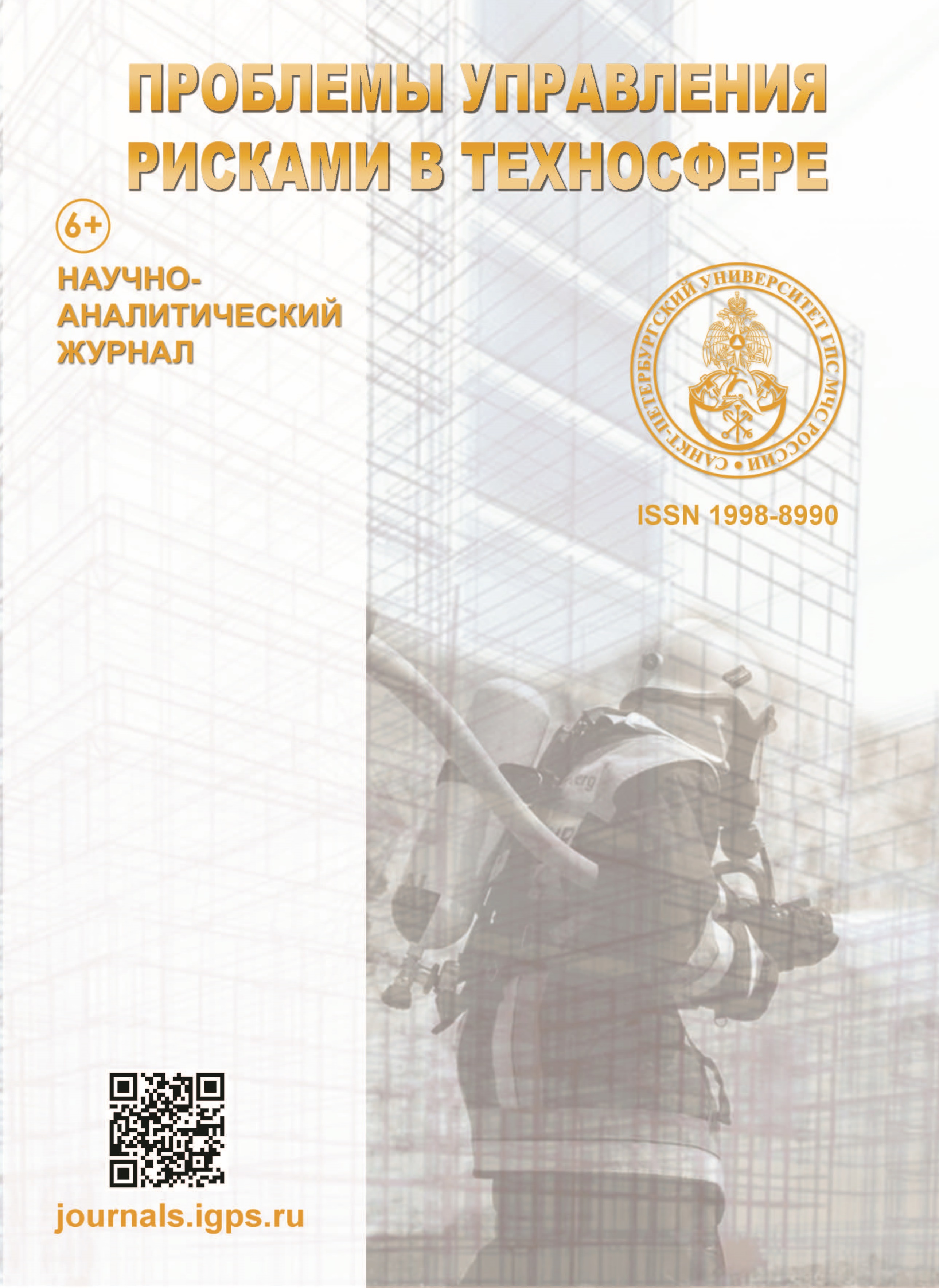Russian Federation
Russian Federation
Russian Federation
The article raises the issue of ensuring the safety of the population during the transportation of emergency chemically dangerous substances by road on the routes of movement in the Arctic zone. The analysis of the predicted possible consequences for accidents with the depressurization of tanks with emergency chemically hazardous substances transported in the Arctic zone at extremely low temperatures was carried out, a comparative analysis of the consequences of accidents at various weather conditions of the Arctic zone and central Russia. The depths of chemical infection are calculated with various parameters of depressurization of the tank in areas of emergency braking and in the stop area. Features of the transportation of emergency chemically hazardous substances are given at extremely low temperatures and recommendations for ensuring the safety of the population on the routes of transport in the settlements of the Arctic zone.
emergency chemically dangerous substances, transportation, automobile transport, chlorine, ammonia, the Arctic zone, the depth of chemical infection, the cloud of infected air
1. Rukovodstvo po bezopasnosti transportirovaniya opasnyh veshchestv na opasnyh proizvodstvennyh ob"ektah zheleznodorozhnymi i avtomobil'nymi transportnymi sredstvami (utv. prikazom Federal'noj sluzhby po ekologicheskomu, tekhnologicheskomu, i atomnomu nadzoru ot 20 yanv. 2017 g. № 20). Dostup iz inf.-pravovogo portala «Garant».
2. Savchuk O.N. Sovershenstvovanie metodiki prognozirovaniya masshtabov vozmozhnogo himicheskogo zarazheniya zhidkimi avarijno himicheski opasnymi veshchestvami pri avariyah // Bezopasnost' truda v promyshlennosti. 2020. № 7. S. 32-39.
3. Savchuk O.N., Krejtor V.P., Aksenov A.A. Puti sovershenstvovaniya metodiki ocenki riska himicheskoj opasnosti pri perevozke AHOV avtomobil'nym transportom // Pozharovzryvobezopasnost'. 2018. T. 27. № 10. S. 46-55.
4. Starovojtova E.V. Prognozirovanie posledstvij avarijnyh zalpovyh vybrosov szhizhennyh gazov. Kazan': Akademkniga, 2012. 195 s.
5. Suvorova S.D. Organizaciya transportirovki opasnyh gruzov v usloviyah Krajnego Severa // Mezhdunarodnyj zhurnal gumanitarnyh i estestvennyh nauk. 2020. № 2 (40).
6. Posledstviya izmenenij klimata dlya ekonomicheskogo rosta i razvitiya otdel'nyh sektorov ekonomiki rossijskoj Arktiki / B.N. Porfir'ev [i dr.] // Arktika: ekologiya i ekonomika. 2017. № 4. S. 28.
7. Britter R.E. Atmospheric dispersion of dense gases // Annual Review of Fluid Mechanics. 1989. Vol. 21. P. 317-344.
8. Kovalenko K.E. Obespechenie bezopasnosti naseleniya v sluchae avarijnogo vybrosa ammiaka na OOO «Altajholod»: magisterskaya dissertaciya. Barnaul: Altajskij gos.un-t, 2018.
9. Kondratov N.A. Osobennosti razvitiya transportnoj infrastruktury v Arkticheskoj zone Rossii // Geograficheskij vestnik. 2017. № 4 (34). S. 68-80.
10. Programma prognozirovaniya posledstvij avarij na transporte, perevozyashchem AXOB: svidetel'stvo ob oficial'noj registracii programmy dlya EVM № 2015610163 Ros. Federaciya / O.N. Savchuk, A.A. Aksenov; zayavitel' i pravoobladatel' Sankt-Peterburgskij universitet GPS MCHS Rossii. № 2014661405; zayavl. 11.11.14; opubl. 12.01.15, Reestr programm dlya EVM.







